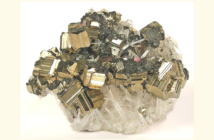Today we have a strange tale to tell of a Monsieur Callaud. He popped into history, invented a new battery, and then seemingly vanished for ever. Everywhere we looked he is simply ‘a Frenchman named Callaud’, or even just ‘Callaud’. Perhaps he was one of those people who shun fame. Amazingly, telegraphists used his invention for 90 years.
The Monsieur Callaud Gravity Cell’s Place in History

Alessandro Luigi Galvani invented the first voltaic pile battery in 1800, although it needed William Cruickshank to stop it leaking by placing it in a trough.
John Frederick Daniell solved the problem of hydrogen bubbles in 1836 by adding a second electrolyte in a gravity cell.
In 1837, Golding Bird added a plaster of paris barrier to Daniell’s clay pot that had already become the first practical battery. Then John Dancer invented a porous pot that allowed the ions to pass freely. But resistance still absorbed most of the current.
A Frenchman called Monsieur Callaud decided this was not good enough. In the 1860’s, he realised Golding Bird’s porous plaster of paris barrier was causing the internal resistance. After he threw the separator away, the modification became the preferred battery for U.S. and U.K. telegraph systems until the 1950’s.

First, Monsieur Callaud placed a copper electrode at the bottom of a glass jar. Then he suspended a zinc anode at the top. Finally, he sprinkled copper-sulfate around the electrode and filled the device with distilled water. His invention worked a treat.
A zinc-sulfate solution accumulated around the zinc anode at the top, as current flowed from the battery. This remained separate from the copper-sulfate solution because its lower density caused it to float. Telegraph operators could look through the glass to gauge battery life, per to the extent of zinc-sulfate accumulation.
But alas, nothing is perfect. If the technicians moved the cell, the copper sulfate and zinc solutions combined because there was no separator. Moreover, if they disconnected the battery the zinc-sulfate sank to the bottom of the jar. That’s about all we can tell you about Monsieur Callaud, and his remarkable 19th Century contribution to battery science.
Related:
History Of Batteries: A Timeline
Preview Image: Morse’s Automatic Telegraph




